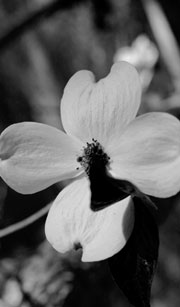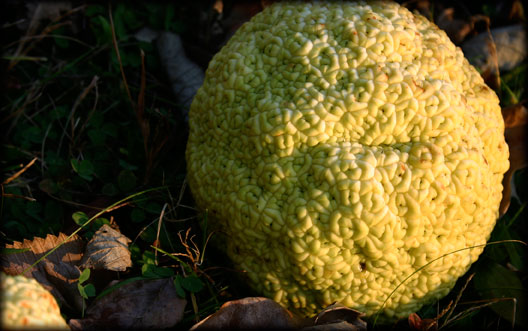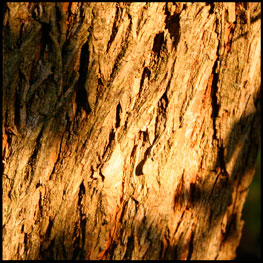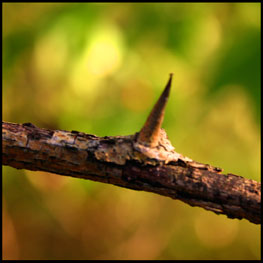 |
||
 |
||

 |
• HOME • GENERAL STORE • NATURAL HERITAGE • HISTORY, CULTURE & CRAFTSMANSHIP |
||||
|
Natural Heritage
• Trees & Shrubs of the Ozarks |
|||||
| Trees & Shrubs Index • Oak • Hickory • Walnut • Catalpa • Loblolly Pine • Red cedar • Elderberry • Sumac • Sassafras • Persimmon • Osage-orange • Mulberry • Witch Hazel • Sarvisberry • Dogwood • Redbud • Crape Myrtle • Mimosa Natural Heritage Index • Fishing • Hunting • Camping • Conservation • Hills & Hollows • Rivers & Lakes • Springs • Caves • Rocks & Fossils • Trees & Shrubs • Plants & Herbs • Hill Critters • Flyin' Critters • Water Critters • Snakes & Such • Forgotten Critters |
|||

A true North American bois d’arc, the Maclura pomifera was relied upon by the Osage tribe, hence its common name, the Osage-orange.
Many native peoples used the Osage-orange for bows, much as the English used the European yew.
The strength and resilience of this tree’s wood is astounding, as is the tree's rather prickly disposition.
The thorns (plate 3)— at left, are sharp and numerous.
The fruit, which does resemble an orange (plate 1), is inedible to humans and indigestible to horses. Only squirrels, it seem, rely on the fruit, digging apart the “hedge apples” during the winter months in order to get at the seeds.
Cultivated at the turn of the 19th century across North America as a hedge and windbreak, the trees may still be found along original plat lines — at least where large-scale farming hasn't uprooted them to make room for a few more rows of corn.
The Osage-orange’s wood itself is extraordinarily long-lasting. Many a hundred-year-old fence post may still be found, weathered but strong as ever (plate 4), a silent testament to our rural past.
The Osage-orange is in the Moraceae Family, as is the Mulberry. One may find similarities in leaf and fruit structure. All species are late to leaf out in the spring and rarely appear ready for winter.
A killing frost is usually the only thing to get these trees to drop their leaves.
— by Joshua Heston
November 8, 2008
Hedge Tree or Hedge Apple (Maclura pomifera)
Size: 30-40 feet tall; leaves 3-5 inches long.
What to look for: leaves broadly lance-shaped, shiny dark green above; stout spines on twigs; fruit yellow-green, nubbly; bark furrowed, shreddy.
Habitat: rich bottomlands; planted in hedgerows and shelterbelts.
— page 301, Wernett, Susan J., et al. North American Wildlife. The Reader’s Digest Association, Inc., 1986.
_______________
Maclura pomifera photo plates
All photo credits: J. Heston • SOTO © Archive. 11/03/08



________________
©StateoftheOzarks.net2008
November 8, 2008
January 25, 2010